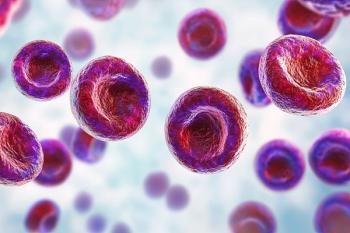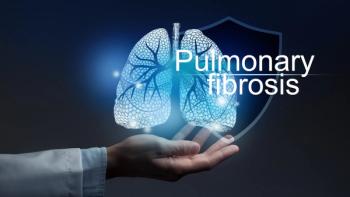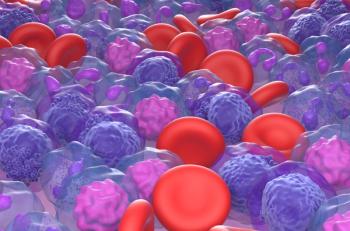
Older, Sexually Active High School Students More Likely to Receive HIV, STI Testing
Key Takeaways
- Adolescents and young adults have the highest prevalence of STIs and new HIV infections, with disparities among racial groups and MSM.
- Significant predictors of HIV and STI testing include age, number of sexual partners, and condom use, with disparities in testing rates.
Increasing testing for both HIV and sexually transmitted infections (STIs) can help to mitigate the incidence of both in high school students.
Specific predictors of testing for HIV and sexually transmitted infections (STIs) were identified among high school students living in the US, which could provide insights into how best to address increasing testing throughout the country, according to a study published in AIDS Care.1
The highest prevalence of chlamydia, gonorrhea, and syphilis is found in adolescents aged 15 to 24 years. A total of 20% of new infections of HIV also come from adolescents and young adults each year.2 STIs and HIV most frequently affect Black, American Indian or Alaska Native, and Native Hawaiian or Pacific Islander individuals as well as men who have sex with men (MSM). Annual screening for both gonorrhea and chlamydia are recommended by the US Preventive Services Task Force (USPSTF) for women but screening still remains inadequate in this demographic. This study aimed to identify the correlation in testing of HIV and STIs in high school students who were sexually active.
This study used data from the Youth Risk Behavior Survey (YRBS), specifically from 2019 and 2021. All data were from the 50 states and the District of Columbia. Eligible participants were those who self-identified as being sexually active. Those with missing information on independent or dependent variables were excluded from the study. All participants self-reported their age, sex, sexual identity, and race.
All participants were asked how old they were when they first had sex, how many sexual partners they’ve had, how many current sexual partners they have, their use of condoms during sex, and their use of alcohol or drugs during sex. Participants were also asked if they had been forced to have sex or if they had gotten any testing for HIV or STIs in the previous 12 months.
A total of 85.6% and 83.7% of the 5732 surveyed participants had never received an HIV or STI test, respectively. In χ2 tests of independence, the authors found that sex (χ2 = 26.51), sexual identity (χ2 = 18.17), condom use (χ2 = 33.11), race/ethnicity (χ2 = 34.34), and alcohol or drug use during sex (χ2 = 18.17) all had statistically significant relationships with HIV testing. The χ2 tests also found that sex (χ2 = 97.21), sexual identity (χ2 = 10.93), condom use (χ2 = 48.75), alcohol or drug use during sex (χ2 = 32.22), and race/ethnicity (χ2 = 39.30) all had statistically significant relationships with STI testing.
Participants who were older (OR, 1.179), had more lifetime sexual partners (OR, 1.211), and had sex at an earlier age (OR, 0.899) were more likely to have received a test for HIV. High school girls were more likely to have received a HIV test compared with boys (OR, 1.650). An HIV test was also more likely to be received by those who were American Indian or Native Alaskan (OR, 0.751) or if they had used a condom during intercourse (OR, 0.827).
STI tests were more likely to be received by those who had more past sexual partners (OR, 0.801), were older (OR, 0.800), and had more current sexual partners (OR, 0.889). Girls were also more likely than boys to have received a test for STIs (OR, 0.395). STI tests were more commonly given to Black/African American students (OR, 4.724), American Indian/Native Alaskan students (OR, 1.300), and multiracial students (OR, 1.461) compared with White participants.
There were some limitations to this study. The data were subject to recall bias due to being self-reported. Some sexual identities were not options to report, which could have limited accurate assessment. Generalizability was also limited due to the cross-sectional design.
The researchers concluded that their study findings prove that testing for both HIV and STI need to improve. “These study results identify specific predictors of HIV and STI testing among sexually active high school students and…identifies areas for future research,” the authors wrote.
References
- Williams Jr RD, Bishop JM, Housman JM. Disparities in HIV testing, STI testing, and associated risk factors in high school-aged youth: findings from the youth risk behavior survey. AIDS Care. Published online February 2, 2025. doi:10.1080/09540121.2025.2458637
- HIV and adolescents and young adults. National Institute of Health. Updated February 5, 2024. Accessed February 19, 2025.
https://hivinfo.nih.gov/understanding-hiv/fact-sheets/hiv-and-adolescents-and-young-adults
Newsletter
Stay ahead of policy, cost, and value—subscribe to AJMC for expert insights at the intersection of clinical care and health economics.













































